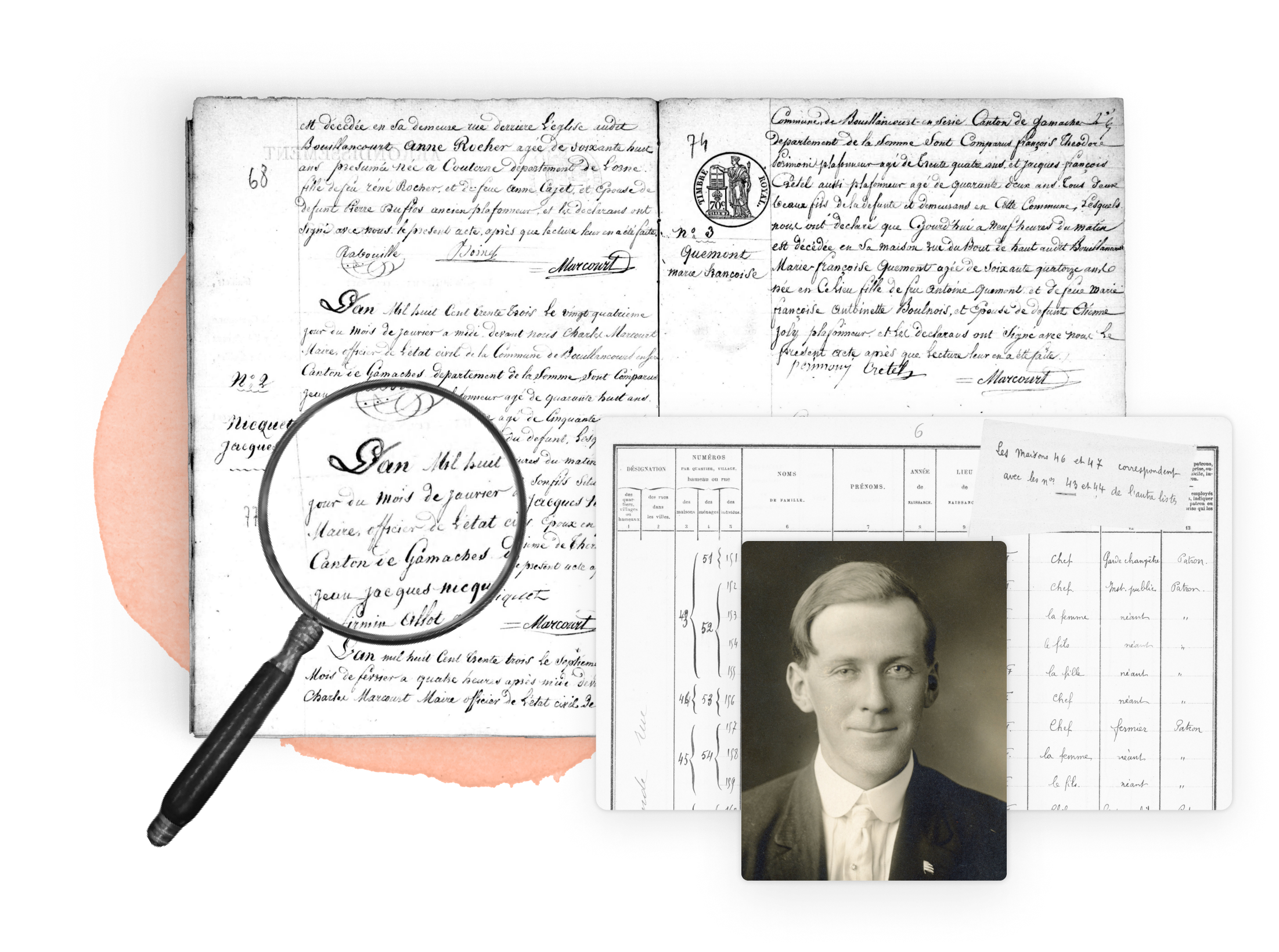An engagement is defined as a “formal agreement to get married.” Potential marital couples or their parents may have chosen to announce their upcoming wedding plans via a party, correspondence with family and friends, or with a public notice found in a newspaper. For the most part, engagement announcements or notices are a more recent genealogical record. In the case of newspapers, they are most often found in 20th-century newspapers, but they also may be found as a home source in the form of a card, piece of engraved stationery, or a photograph. Some forms of marriage records such as banns or bonds also provide a type of engagement announcement, although not meant for that purpose.
Research your ancestors on MyHeritage
Newspaper Engagement Announcements or Notices
Newspaper engagement announcements or notices are primarily a 20th-century article. Those found in the 19th century, especially before the 1860s, are largely announcements of couples from wealthy or well-known families. Newspaper engagement notices for non-society couples will likely not be found before the late nineteenth to early 20th centuries.
At the very least, newspaper engagement announcements include the name of the potential bride and groom. However, it may also include:
- Brides’ parent’s names
- Groom’s parents’ names
- Age of bride and groom
- Occupation of bride and/or groom
- Education of bride and/or groom
- Membership organizations
- Place and date of upcoming wedding
- Bride’s photograph
Engagement newspaper notices change over time to include more information and even a photograph of the prospective bride.
Some newspapers stopped printing engagement notices due to a lack of space and a preference for wedding notices. Researchers should consult the newspaper they are researching for when engagement announcements were printed and if they were discontinued. Newspapers also included information about rules for engagement notice inclusion, which will help the researcher understand what to expect in a printed notice.
Unlike mandatory marriage records (certificates and licenses, for example), engagement notices were something couples chose to do, and not all couples would have placed one in the newspaper. One cannot assume anything from the lack of a newspaper engagement notice.
Newspapers often had strict rules for engagement notices, including that they had to be done three weeks or more prior to the wedding and that they needed to be provided in-person and signed to confirm their legitimacy.
Analyzing Newspaper Engagement Announcements
As you find newspaper announcements, analyze the information that is printed as well as what is not. For example:
- An announcement that lists a bride or groom as the daughter/son of a woman with no mention of the father might indicate the father’s absence due to death, abandonment, or divorce.
- An announcement that lists the name of a church may indicate the bride or groom, or the family’s membership in that church or religion. Church records should be sought for additional information on the family.
- Any mention of workplaces, education, or membership groups can help lead to additional records.
- A bride’s surname that is different than her parents may indicate her previous marriage or her mother’s.
Problems with using Newspaper Engagement Announcements for Genealogy
Unlike a marriage certificate, an engagement announcement, or for that matter a marriage bann, bond, or license does not guarantee that there was a marriage. Broken engagements happen for a number of reasons. Any engagement notice found should be followed up with a marriage certificate verifying the marriage actually took place.
Although the bride, groom or their parents most likely provided the information found in newspaper engagement announcements, that does not mean the information in the notice is correct. Keep in mind errors can occur due to the lack of knowledge by the person submitting the information to the newspaper or transcription errors on the account of the newspaper staff.
See also
Research your ancestors on MyHeritage
Explore more about engagement announcements
- The newspapersrecords collection at MyHeritage includes information about historical events, engagements, marriages, divorces, births, deaths, moves, business, naturalizations, court cases, and more.
- The marriage & divorce records collection at MyHeritage. This collection represents one of the key primary sources for family information, typically being issued the same day as a marriage takes place. In some cases, religious-based marriage documents exist too, but the civil record of the marriage has always been required.
- Birth, Marriage, and Death at MyHeritage - sometimes referenced to as vital records are invaluable to your genealogy search. Since they were typically recorded around the time of the event they are often considered more accurate than other types of records. These records include information like the event date and place, parents' names, occupation and residence.
- Church Records at MyHeritage contain the names of congregation members, and possibly even records of baptisms, christenings, marriages, and deaths and burials.
- Marriage Records: Everything You Need to Know on the MyHeritage Blog
- Ask The Expert – Marriage Records on MyHeritage at MyHeritage Knowledge Base
- Vital Records: How to Find Birth, Marriage & Death Records at MyHeritage Knowledge Base


